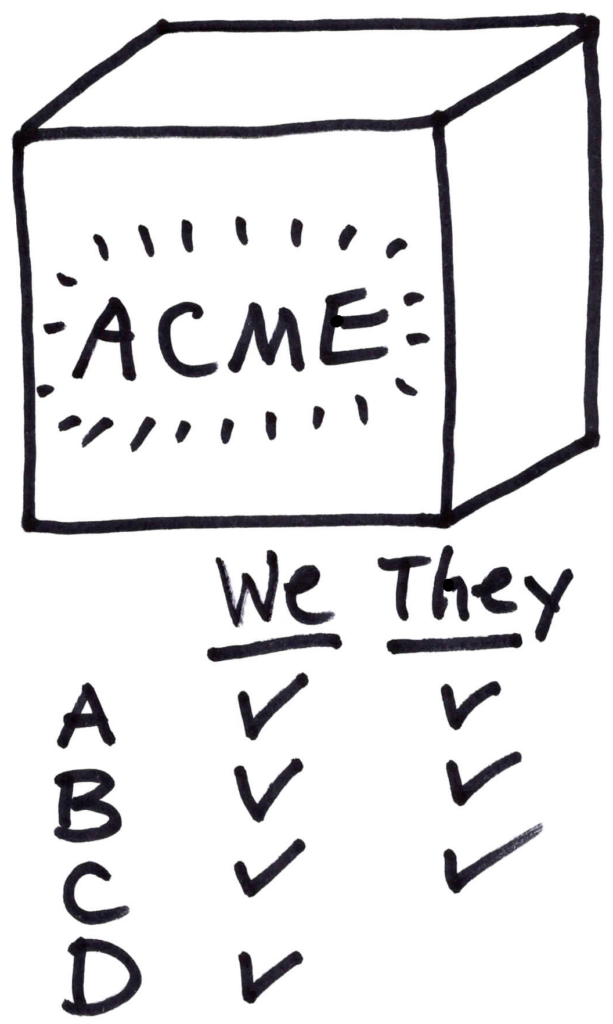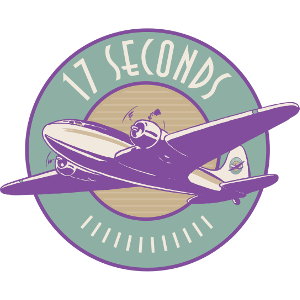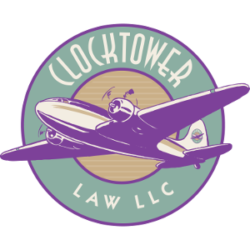17 Seconds #100. Useful Info Quickly.

For startups, the two most important patent law concepts are:
- PRODUCT-BASED PATENTING (17 Seconds #100)
- FILE BEFORE LAUNCH (17 Seconds #101)
The product-based patenting approach simplifies patent law into two requirements.
(1) REQUIREMENT 1 = BETTER/FASTER/STRONGER. First, you must have a “product” (which we’ll define later) that is better/faster/stronger than the competition using features/benefits that you define, both in the present (i.e. the “prior art” section of the patent application) and in the future (i.e. the “other embodiments” section). All startups have this, which is why they started the startup.
(2) REQUIREMENT 2 = SECRET SAUCE. Second, one of those features must be unique to you, not just in your market but in all markets. We sometimes call this feature your “nugget of newness” or your “secret sauce.” It’s the thing that you would keep a trade secret (if you were not pursuing patents). This is the more challenging requirement, and it’s where we spend most of our time debating with the USPTO. Let’s say your product has four features: A, B, C, and D. The patent office can find three features (A, B, C) in a competitive product, combine it with feature D in an unrelated product, and then declare the the combination (A, B, C, D) is “obvious,” and then deny your patent. So when we are debating with the patent office about obviousness, we say something like this: “That D that you found is not the same as our D. Even if it’s the same, there is no reason to combine D with our A, B, C. And even if there is a reason to combine, we have E in our back pocket.” So you can always get a patent by adding more elements (E, F, G) to your product, but more elements makes for a more narrow patent. So the question isn’t WHETHER you can get a patent, the question is whether or not it’s WORTH IT (and that’s what our patent search attempts to reveal).
(3) WHAT IS A PRODUCT? Finally, let’s define “product.” A product is not necessarily something that you sell to a customer for money, it’s not necessarily something that is customer-facing. This is best explained by two examples, one old and one new. The first settlers of the American West took coffee beans with them, cooked them, ate them, threw away the liquid. That’s called not knowing what your product is. More recently, software engineers for Slack, a failed gaming company, created an internal communication tool for its game developers “over the weekend.” (As an aside, we are super suspicious of anything that software engineers create “over the weekend.” Facebook’s photo-tagging software, Google Reader, Twitter – all created over the weekend.) So we encourage all startups to take a broad view of what a “product” is. You can start very broad by putting a box around the company and looking at its inputs and outputs. And if your products are intangible (like software), then know that version 2.0 (not yet launched) is separately patentable over version 1.0 (launched). So is version 1.1. So that new feature that you are baking into the code going from 1.0 to 1.1? That may be your D that gets the 1.1 product over the patent hump. So we are always encouraging startups pursuing patents to “look for their coffee beans,” so to speak.

17 Seconds is a publication for clients and other VIPs. Powered by Mailchimp and the beat of a different keyboard player. Click here to subscribe to 17 Seconds.



Considering a startup accelerator such as MassChallenge, Techstars, gener8tor, or Y Combinator? Good choice! Implement these two best practices in your startup and you will be ahead of 95% of your competitors:
* FILE BEFORE LAUNCH – The Single Most Important Concept For Startups – Turns Your Product Roadmap Into A Patent Roadmap (2022-10-17)
17 Seconds #101. Useful Info Quickly.
https://www.clocktowerlaw.com/6281.html
https://www.giantpeople.com/17244.html
* PRODUCT-BASED PATENTING – The Second Most Important Concept For Startups – Simplifies Patent Law Into Two Requirements (2022-09-17)
17 Seconds #100. Useful Info Quickly.
https://www.clocktowerlaw.com/6266.html
https://www.giantpeople.com/17233.html
ABOUT CLOCKTOWER. Since 2001, Clocktower has been laser-focused on #patents and #trademarks for #startups. Over 40 Clocktower clients have been acquired at a total valuation of over $6 billion. Zero clients have fired Clocktower and then gone on to be acquired by a public company.
[EDITOR’S NOTE: In the summer of 2025, Clocktower Intern Mark Magyar used artificial intelligence (AI) software to shorten over 100 Clocktower articles by 17%. The shortened articles are included as comments to the original ones. And 17 is the most random number (https://www.giantpeople.com/4497.html) (https://www.clocktowerlaw.com/5919.html).]
* PRODUCT-BASED PATENTING – The Second Most Important Concept For Startups – Simplifies Patent Law Into Two Requirements
17 Seconds #100. Useful Info Quickly.
For startups, the two key patent law concepts are:
PRODUCT-BASED PATENTING (17 Seconds #100)
FILE BEFORE LAUNCH (17 Seconds #101)
The product-based patenting approach boils down to two requirements:
(1) BETTER/FASTER/STRONGER
You need a “product” (defined later) that is better/faster/stronger than the competition based on features/benefits you define—both present (“prior art”) and future (“other embodiments”). Every startup has this—that’s why they exist.
(2) SECRET SAUCE
One feature must be uniquely yours, not just in your market but in all markets—a “nugget of newness” or “secret sauce.” Without patents, this would be a trade secret. Here’s the challenge: if your product has features A, B, C, D, the USPTO can combine A/B/C from one product with D from another, call it “obvious,” and deny your patent. We counter: “Their D isn’t our D. Even if it is, there’s no reason to combine it with A/B/C. And if there is, we’ve got E.” You can always add E, F, G, but more elements narrow the patent. The question isn’t WHETHER you can get a patent—it’s whether it’s WORTH IT (which our search helps reveal).
(3) WHAT IS A PRODUCT?
A product isn’t just what you sell or what’s customer-facing. Early settlers took coffee beans west, cooked them, ate them, tossed the liquid—that’s not knowing your product. More recently, Slack engineers built an internal tool “over the weekend” that became Slack. (We’re suspicious of “weekend” inventions: Twitter, Google Reader, Facebook tagging.) Take a broad view: define your company’s inputs/outputs. For intangibles like software, version 2.0 is patentable over 1.0—and so is 1.1. That new feature in 1.1 may be your “D” that clears the patent hurdle. Always “look for your coffee beans.”
* FILE BEFORE LAUNCH – The Single Most Important Concept For Startups (2022-10-17)
https://www.clocktowerlaw.com/file-before-launch
* PRODUCT-BASED PATENTING – The Second Most Important Concept For Startups (2022-09-17)
https://www.clocktowerlaw.com/product-based-patenting